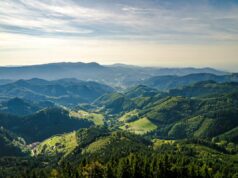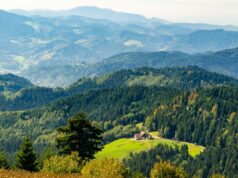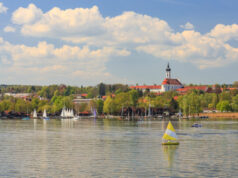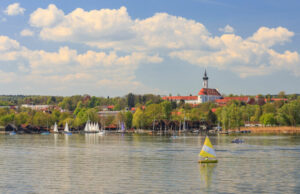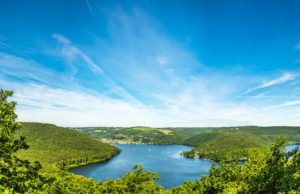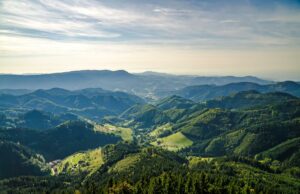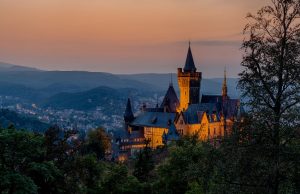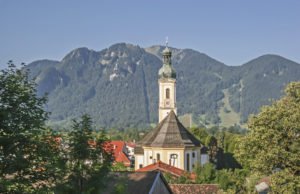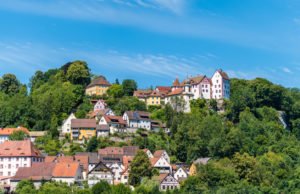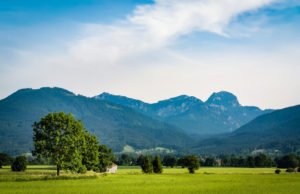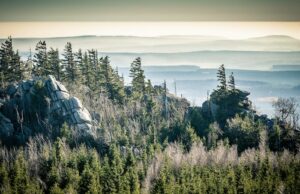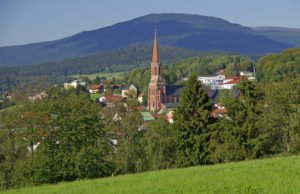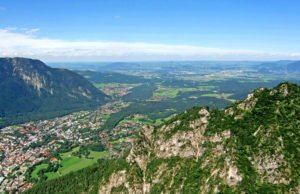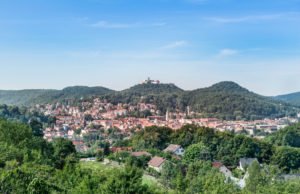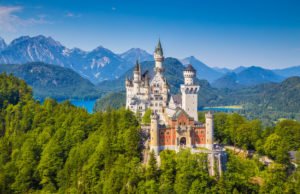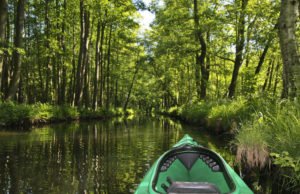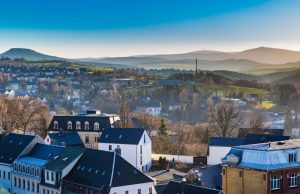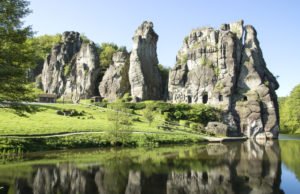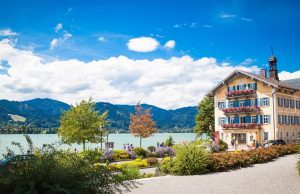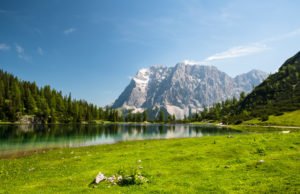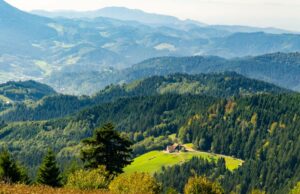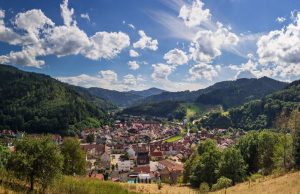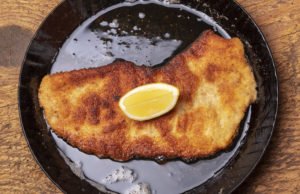
The Black Forest is a large scenic area in Southwestern Germany, in the state of Baden – Wurttemberg. It is full of trees, mountains, valleys and lakes just waiting to be explored, experienced and photographed. The vast and alluring nature park stretches from the town of Baden-Baden to the Swiss border, and from the Rhine almost as far as Lake Constance.
What to see
With so many beautiful things to see and exciting things to do, it is difficult to know where to start. The Black Forest is the most charming region in the whole of Germany, and whether you love mountain peaks, lush valleys, breathtaking views, ample vineyards, or enchanting forests, there is something for everyone in this incredible unspoilt landscape.
Towns and Cities
There are dozens of attractive villages, towns and cities to explore throughout the region. The elegant spa town of Baden-Baden, with its air of genteel glamour has an idiosyncratic allure, a study of rejuvenation and indulgence. The historic Roman Friedrichsbad and the Caracalla baths have pools and sauna cabins set among the pines. The peaceful streets are lined with high-class shops and cosy cafés.
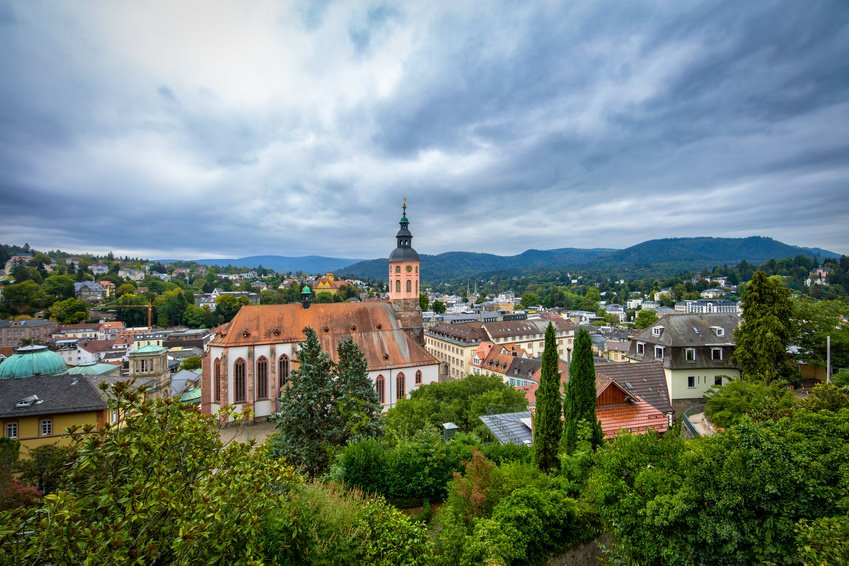
Bad Wildbad is smaller and less expensive than Baden-Baden. It is located along the foothills of the mountain range and is known for its spectacular scenery.
Triberg is the cuckoo clock capital of the north, and is famous for the country’s highest waterfalls. The Black Forest Museum can be found directly below the entrance to the waterfalls.

The university town of Tubingen, with its narrow alleys and pointed gables, is a pretty medieval place with cafes, wine taverns, shops and restaurants. Take a boat trip in a traditional Stocherkahn along the Nektar River to enjoy the magnificent vistas.
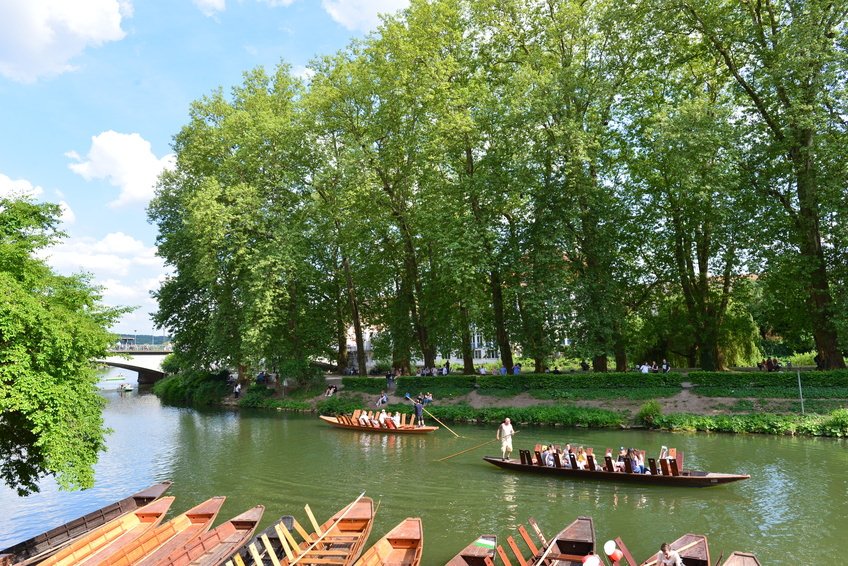
Further south is the beautiful university town of Freiburg, with wisteria clad streets in summer, and Christmas markets in winter. Visit the Munster. Dating from the 13th century, it is one of the most beautiful Gothic churches in Germany. Walk along the wooded foothills of the Schwarzwald, or take a cable car up the Schauinsland to see the incredible view across the mountains. While exploring the pretty narrow streets is pleasant, this is also a great base for discovering the region with its deep valleys surrounded by rounded peaks and small ski and lake resorts.
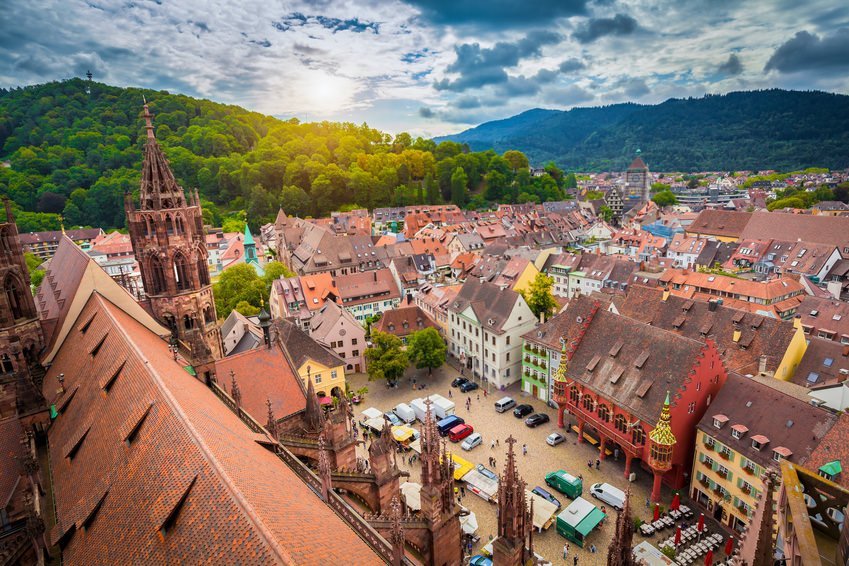
Freudenstadt, with the largest market square in Germany, is framed by beautiful historic buildings, housing quirky arcades and quaint, galleried shops.
Cirque Lakes
The deep and mysterious cirque lakes, often called “the dark eyes of the black forest”, are found in bowl-shaped valleys formed by glacial or fluvial erosion. The Mummelsee is a legendary lake on the southwestern slope of the Hornisgrinde, the highest mountain in the northern part of the Back Forest. According to legend, mermaids and nymphs are said to live in the lake.
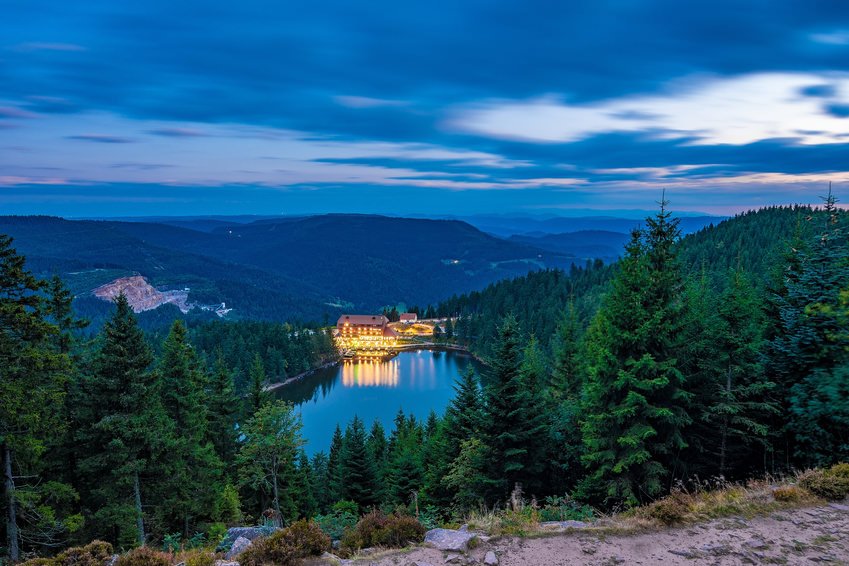
Lake Titisee, another glacial lake is located in the south of the Black Forest region. It was formed during the last ice age and is perfect for swimming and sailing.
The beautiful Lake Constance is the largest lake in Germany, and is bordered by Austria and Switzerland. It is girdled with castles, medieval towns and attractive villages. Nearby Mainau Island is a popular tourist attraction with beautiful parks and gardens.

Hiking and Cycling
A short walk or bike ride from the towns and villages, you will find peaceful countryside dotted with traditional farmhouses in clearings in the thick forests. The area has plenty of well-signposted footpaths and cycle routes. Invest in an inexpensive tourist map of the area which shows all the attractions, such as castles, waterfalls and hostels as well as the paths and cycle routes.
Living History Museum
Between Hausach and Gutach is an open-air living history museum based around an old farm that has existed since 1570. Other historic buildings such as a bakery, distillery and granary have been transported here to create the museum. It explores the cultural heritage of the region and preserves historic artefacts.
Cuckoo Clocks
The Black Forest has a long tradition of cuckoo clock manufacture. In Schonach, you will find the world’s biggest cuckoo clock which is built into a small house in the town. The region is also home to what is considered Europe’s best clock museum. The German Clock Museum in Furtwangen shows the development of time-telling from the Dark Ages, right up to the present. The House of 1000 Clocks is located in Gremmelsbach near Triberg, and sells traditional cuckoo clocks along with more modern designs.
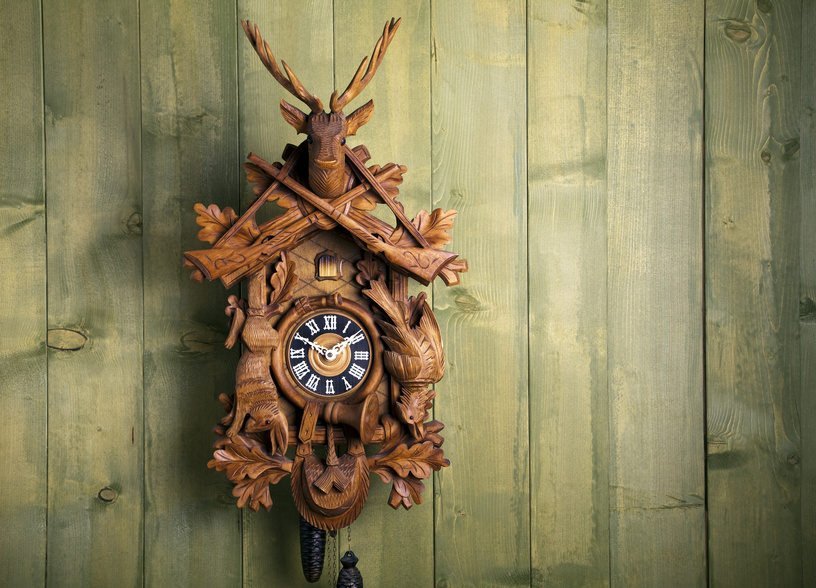
Best time to visit
Although the Black Forest is a ‘year round’ destination, it is mainly visited by tourists during the summer months. If you want to vacation during a quieter season, spring is ideal with its mild climate. Summer is a great time if you enjoy spending most of your day outdoors. Days are hot and evenings pleasantly warm. Late autumn is cooler with warm, showery weather. During this season, the Germans host their wine and harvest festivals. It is also still a good time for mountain biking, or Nordic walking. Expect snow during the winter. If you enjoy winter sports such as downhill, cross-country or ski jumping, as well as dog sledding and snowboarding, this is the best time for you. The snow transforms the scenery into a magical, glistening landscape.
Where to Stay
The Black Forest is dotted with hotels, guesthouses, bed & breakfast establishments, pensions and vineyard or farm accommodation. The region is extremely popular during the summer, so be sure to make reservations well in advance. In small towns, some hotels close for a month during winter so be sure to check ahead. More information can be found at http://www.blackforest-tourism.com.
Public transport
One of the best ways to explore the Black Forest is by train. The line from Donaueschingen to Offenburg travels through the forest, and offers outstanding views. A Lander ticket is valid for 24 hours and allows you to travel anywhere within a single region. A first-class Lander ticket may work out cheaper than a number of second-class fares. If you are cycling, there are normally carriages that accommodate bicycles. Timetables and fares can be checked at https://www.bahn.com/en/view/index.shtml.
The bus system is partially owned by the German Railways, making it easy to travel throughout the region. Bus stops are usually near the train stations. Tourist travel passes allow travel within a 35 mile radius. For more information, go to https://.sudwesthaus.de.
Shopping areas
Most towns and villages have small boutiques and souvenir shops as well as cafes, taverns and restaurants. You can also buy local produce from the farmers’ markets.
Typical regional food
Schwarzwalder Schinken is a variety of smoked ham that is only produced in the Black Forest region. The village of Musbach, near Freudenstadt, has one of the leading smokehouses in the area. If you are looking for Black Forest ham, this is the place to go.
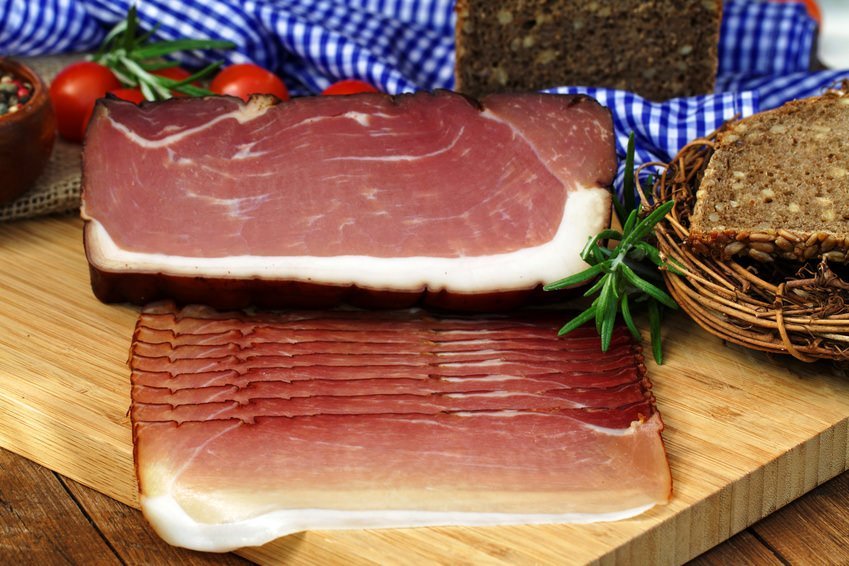
Enjoying the culinary delights the Black Forest has to offer doesn’t have to mean dining in expensive restaurants. Eating in a local gasthaus is all part of the experience, and countryside restaurants have excellent chefs. The menu of a village guest house may have a surprising selection of culinary treats such as goose liver, venison, poppy seed cake, Gugelhupf, and of course, the famous Black Forest Gateau.
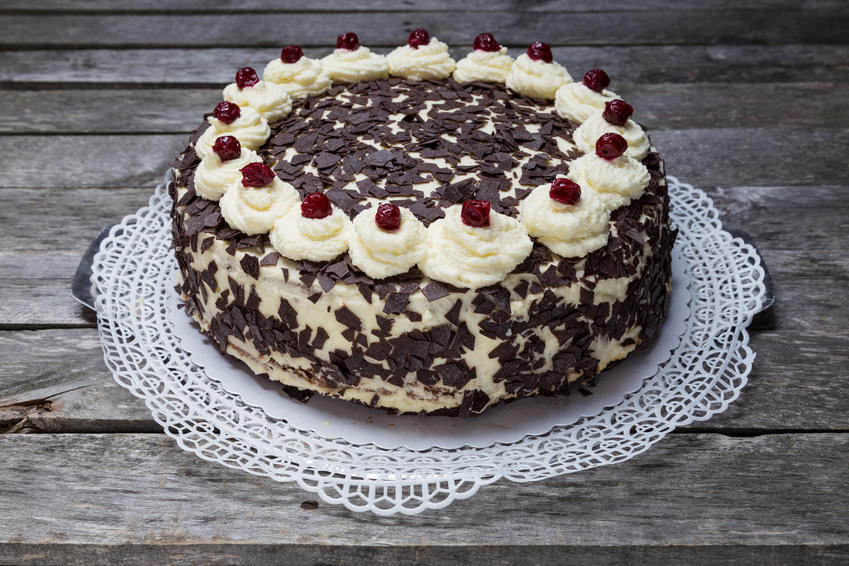


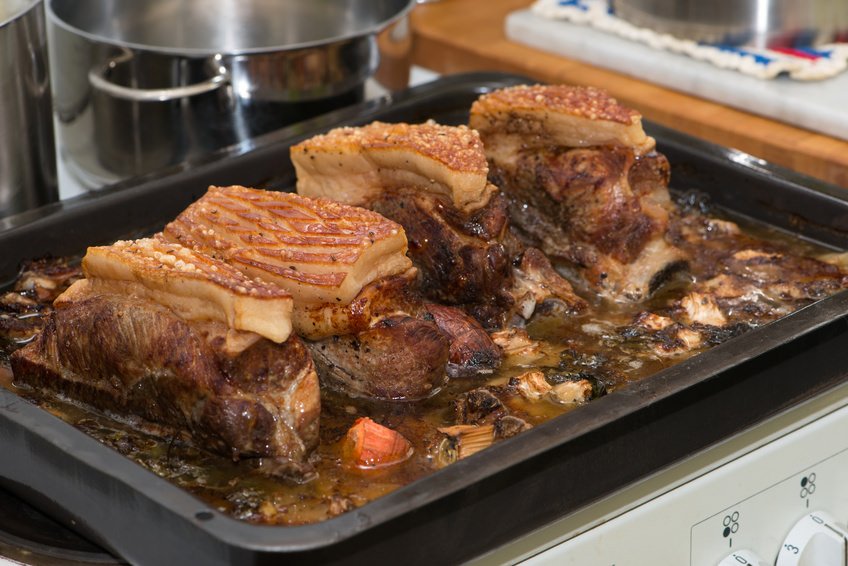
Nightlife
The Black Forest has a variety of bars, taverns, clubs and discos, where you can party or dance the night away. There are also cinemas, theatres and casinos.
Off the beaten path
Going off the beaten track really gives you an insight into the culture and customs of a place. Try staying on a working farm. Accommodation is reasonably priced and food is usually good. But be warned, they are very popular, so book well in advance.
Visiting during the grape harvest? Seek out local vineyard owners who open their homes to paying guests and serve dishes from their own-reared livestock, accompanied by delicious local wines.
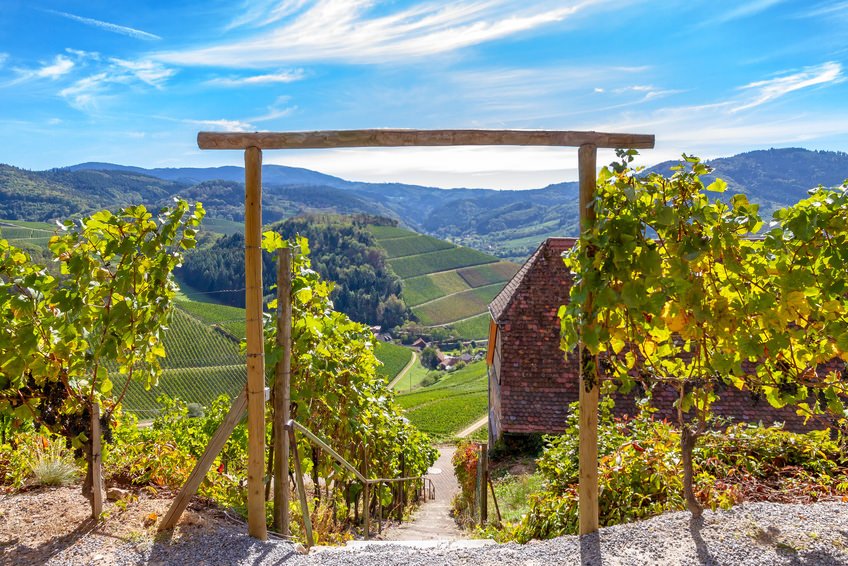
English speakers may be difficult to find when travelling off the beaten track. Hire a local guide to help you. Experiencing the unique cultural aspects of the region will enhance your enjoyment and knowledge of the locality.
For something a little different, why not try a Brothers Grimm tour? The Black Forest is said to have provided the inspiration for many of the stories they produced. Hanau near Frankfurt, is the birthplace of Wilhelm and Jacob Grimm, who collated the fairytales. In the pretty town of Steinau, the house to which Jacob and Wilhelm moved when they were young is now a museum, and is open to the public. In Kassel, where they spent most of their lives, the museum holds a copy of the fairytales, personally annotated by the brothers.
There is a “Snow White’s house”, in the quaint village of Bergfreiheit, above the spa town of Bad Wildungen. The main downstairs room has seven dwarf-style hats and little beds. There is a plaque in the upstairs room that tells the story of Margaretha von Waldeck, a local girl whose stepmother forced her to move abroad. She was allegedly poisoned and died in 1554 at the age of 21. Nearby there is a copper mine that was worked by hand for 450 years. Miners were employed from all over Germany, with the promise of paying no taxes and being allowed to hunt whatever they wished. Only short, strong men were engaged to work in the mine giving rise to the legend of the dwarves.
From a high window in a tower of the Trendelburg Hotel, hangs a long tress of blonde hair representing Rapunzel. Sababurg Castle, the imagined residence of Sleeping Beauty, has a spinning wheel halfway up the spiral staircase.
In the town of Hamelin, pavement rat markers and pretty half-timbered houses, set the scene for the tale of the Pied Piper.


